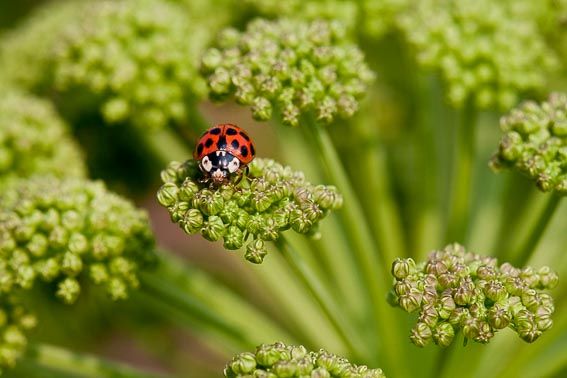
Designing For Wildlife
Creating a Balance of Horticulture and Ecology

The enemies of wild life gardens are mainly domestic: cats, dogs and indifferent humans who may have no interest in preserving a balanced eco-system. However wildlife gardens have enormous educational value for adults and children as long as nature is not allowed to reclaim the entire garden.
Explore ideas with your clients.
Even if they are initially cautious it should be possible to have them agree to create at least one small wild area within or at the edge of the garden. Start with one or more small areas of lawn in a sunny or only partially shaded site. Inscribe a small circle, rectangle or square of grass, in scale with and set inside the larger area of lawn.
Ensure the mower can be comfortably manipulated around and between the shapes. Avoid making it too busy, but if the lawn is large you might create a pattern of, say, four neatly edged squares, or three circles of grass to be left to grow to a maximum of 8 or 10 cms taller than the remaining lawn.
These will quickly yield low-growing wildflowers such as self-heal, a variety of grasses, daisies and buttercups. Even a tiny area will attract bees and hoverflies. Visually it will provide a change of rhythm to the close-cut, uneventful lawn space. Be ruthless in removing invasive weeds such as docks and hogweed.
After they have set seed the mini wildflower areas can be lightly mown, with the mower at its highest setting and then retained as neatly defined areas of rough grass with late spring flowering bulbs allowed to follow through. This introduces an entirely different look, which is not wild but works well through late spring and early summer before the grasses start to grow vigorously.
Plant short-stemmed tulips – I like to use a single colour – dotted throughout the rough grass. Spring gales can easily snap the longer stems of tall varieties and as they die down the leaves of taller plants are more noticeable and unsightly. White, or pale yellow narcissi also look wonderful scattered through rough grass.
Experiment. Plant mid-height nectar rich flowering plants as plugs, ensuring continuity of food supply for insects. If your clients prefer the grass to revert to normal lawn height the rough grass can simply be mown and should quickly recover its normal colour with a little general fertiliser added.
Wild flower habitats will be populated surprisingly quickly by beneficial insects such as bees, ladybirds, hoverflies and lacewings, butterflies, moths, small mammals and birds that will eat some snails and slugs. If water is a part of the plan it will increase the range of wildlife considerably, with the potential to attract amphibians such as frogs and newts, exotic-looking dragonflies and even kingfishers.
Insect ‘hotels’ are readily available, but a small pile of logs will do just as well. Leave a small patch of nettles in a sunny corner, where a variety of butterflies can lay their eggs. Bird and bat boxes will be used, as long as they are sited where local cats cannot reach either the boxes or nearby bushes that provide initial safe resting places and shelter for fledglings.
A wildflower meadow is a bigger undertaking and is the subject of a future blog, together with suggested wild flowers to include.





